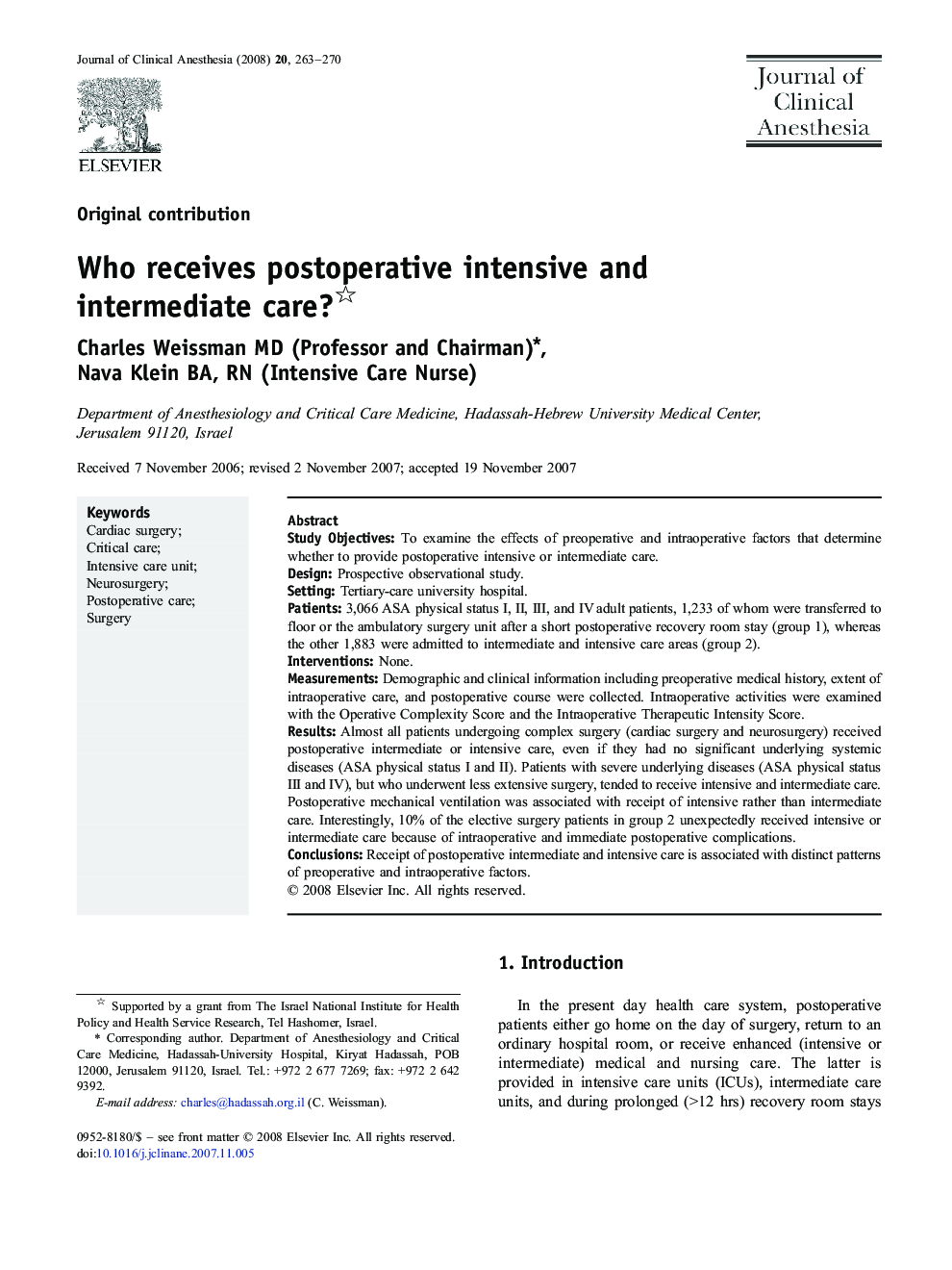| Article ID | Journal | Published Year | Pages | File Type |
|---|---|---|---|---|
| 2763498 | Journal of Clinical Anesthesia | 2008 | 8 Pages |
Study ObjectivesTo examine the effects of preoperative and intraoperative factors that determine whether to provide postoperative intensive or intermediate care.DesignProspective observational study.SettingTertiary-care university hospital.Patients3,066 ASA physical status I, II, III, and IV adult patients, 1,233 of whom were transferred to floor or the ambulatory surgery unit after a short postoperative recovery room stay (group 1), whereas the other 1,883 were admitted to intermediate and intensive care areas (group 2).InterventionsNone.MeasurementsDemographic and clinical information including preoperative medical history, extent of intraoperative care, and postoperative course were collected. Intraoperative activities were examined with the Operative Complexity Score and the Intraoperative Therapeutic Intensity Score.ResultsAlmost all patients undergoing complex surgery (cardiac surgery and neurosurgery) received postoperative intermediate or intensive care, even if they had no significant underlying systemic diseases (ASA physical status I and II). Patients with severe underlying diseases (ASA physical status III and IV), but who underwent less extensive surgery, tended to receive intensive and intermediate care. Postoperative mechanical ventilation was associated with receipt of intensive rather than intermediate care. Interestingly, 10% of the elective surgery patients in group 2 unexpectedly received intensive or intermediate care because of intraoperative and immediate postoperative complications.ConclusionsReceipt of postoperative intermediate and intensive care is associated with distinct patterns of preoperative and intraoperative factors.
